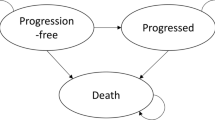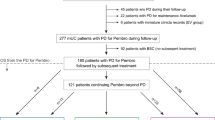Abstract
Pleural effusion (PE) represents the leading cause of dasatinib (DAS) discontinuation. However, the pathogenic mechanism of this adverse event (AE) is unknown and its management unclear. We investigated if a DAS dose reduction after the first PE would prevent the recurrence of this AE. We retrospectively collected data on all the cases of PE in CML-chronic phase (CP) DAS-treated patients from November 2005 to February 2017 in 21 Italian hematological centers. We identified 196 cases of PE in a series of 853 CML-CP DAS-treated patients (incidence 23.0%). DAS starting dose was 100 mg/day in 70.4% of patients, less than 100 mg/day in 14.3%, and more than 100 mg/day in the remaining cases. Median time from DAS start to PE was 16.6 months. At first PE development, 28.6% of patients were in MMR, and 37.8% in deep molecular response (DMR). DAS was temporary interrupted in 71.9% of cases, with a dose reduction in 59.2%. Recurrence was observed in 59.4% of the cases. Treatment was definitively discontinued due to PE in 29.1% of the cases. Interestingly, among patients whose DAS dosage was reduced, 59.5% experienced PE recurrence. DAS dose reduction after the first episode of PE did not prevent recurrence of this AE. Therefore, once a MMR or a DMR is achieved, different strategies of DAS dose management can be proposed prior to the development of PE, such as daily dose reduction or, as an alternative option, an on/off treatment with a weekend drug holiday.
Similar content being viewed by others
References
Druker BJ, Lydon NB (2000) Lessons learned from the development of an Abl tyrosine kinase inhibitor for chronic myelogenous leukemia. J Clin Invest 105:3–7
Jemal A, Siegel R, Xu J, Ward E (2010) Cancer statistics, 2010. CA Cancer J Clin 60:277–300
Hochhaus A, Larson RA, Guilhot F et al (2017) Long-term outcomes of imatinib treatment for chronic myeloid leukemia. N Engl J Med 376:917–927
Quintas-Cardama A, Kantarjian H, O'Brien S et al (2007) Pleural effusion in patients with chronic myelogenous leukemia treated with dasatinib after imatinib failure. J Clin Oncol 25:3908–3914
de Lavallade H, Punnialingam S, Milojkovic D et al (2008) Pleural effusions in patients with chronic myeloid leukaemia treated with dasatinib may have an immune-mediated pathogenesis. Br J Haematol 141:745–747
Brave M, Goodman V, Kaminskas E et al (2008) Sprycel for chronic myeloid leukemia and Philadelphia chromosome-positive acute lymphoblastic leukemia resistant to or intolerant of imatinib mesylate. Clin Cancer Res 14:352–359
Pavlu J, Marin D (2009) Dasatinib and chronic myeloid leukemia: two-year follow-up in eight clinical trials. Clin Lymphoma Myeloma 9:417–424
Hochhaus A, Kantarjian HM, Baccarani M et al (2007) Dasatinib induces notable hematologic and cytogenetic responses in chronic phase chronic myeloid leukemia after failure of imatinib therapy. Blood 109:2303–2309
Kantarjian H, Pasquini R, Hamerschlak N et al (2007) Dasatinib or high-dose imatinib for chronic-phase chronic myeloid leukemia after failure of first-line imatinib: a randomized phase 2 trial. Blood 109:5143–5150
Porkka K, Khoury HJ, Paquette RL, Matloub Y, Sinha R, Cortes JE (2010) Dasatinib 100 mg once daily minimizes the occurrence of pleural effusion in patients with chronic myeloid leukemia in chronic phase and efficacy is unaffected in patients who develop pleural effusion. Cancer 116:377–386
Cortes JE, Saglio G, Kantarjian HM et al (2016) Final 5-year study results of DASISION: the dasatinib versus imatinib study in treatment-naïve chronic myeloid leukemia patients trial. J Clin Oncol 34:2333–2340
Shah NP, Rousselot P, Schiffer C et al (2016) Dasatinib in imatinib-resistant or -intolerant chronic-phase, chronic myeloid leukemia patients: 7-year follow-up of study CA180-034. Am J Hematol 91:869–874
Latagliata R, Breccia M, Fava C et al (2013) Incidence, risk factors and management of pleural effusions during dasatinib treatment in unselected elderly patients with chronic myelogenous leukaemia. Hematol Oncol 31:363–369
Breccia M, Latagliata R, Stagno F et al (2011) Charlson comorbidity index and adult comorbidity evaluation-27 scores might predict treatment compliance and development of pleural effusions in elderly patients with chronic myeloid leukemia treated with second-line dasatinib. Haematologica 96:1457–1461
Shah NP, Wallis N, Farber HW et al (2015) Clinical features of pulmonary arterial hypertension in patients receiving dasatinib. Am J Hematol 90:1060–1064
Steegmann JL, Baccarani M, Breccia M et al (2016) European LeukemiaNet recommendations for the management and avoidance of adverse events of treatment in chronic myeloid leukaemia. Leukemia 30:1648–1671
Charlson ME, Pompei P, Ales KL, MacKenzie CR (1987) A new method of classifying prognostic comorbidity in longitudinal studies: development and validation. J Chronic Dis 40:373–383
Baccarani M, Saglio G, Goldman J et al (2006) Evolving concepts in the management of chronic myeloid leukemia: recommendations from an expert panel on behalf of the European LeukemiaNet. Blood 108:1809–1820
Baccarani M, Cortes J, Pane F et al (2009) Chronic myeloid leukemia: an update of concepts and management recommendations of European LeukemiaNet. J Clin Oncol 27:6041–6051
Baccarani M, Deininger MW, Rosti G et al (2013) European LeukemiaNet recommendations for the management of chronic myeloid leukemia: 2013. Blood 122:872–884
National Cancer Institute (2010) Common terminology criteria for adverse events. v4.03, NIH Publication #09e5410. NCI, NIH, DHHS, Bethesda, MD
Bergeron A, Rea D, Levy V et al (2007) Lung abnormalities after dasatinib treatment for chronic myeloid leukemia: a case series. Am J Respir Crit Care Med 176:814–818
Kim D, Goh HG, Kim SH, Cho BS, Kim DW (2011) Long-term pattern of pleural effusion from chronic myeloid leukemia patients in second-line dasatinib therapy. Int J Hematol 94:361–371
La Rosée P, Martiat P, Leitner A et al (2013) Improved tolerability by a modified intermittent treatment schedule of dasatinib for patients with chronic myeloid leukemia resistant or intolerant to imatinib. Ann Hematol 92:1345–1350
Author information
Authors and Affiliations
Corresponding author
Ethics declarations
Conflict of interest
A. Iurlo: consultant for and honoraria from Novartis, Bristol-Myers Squibb, Incyte, and Pfizer; E. Abruzzese: consultant for Novartis and Bristol-Myers Squibb; R. Latagliata: honoraria from Novartis, Bristol-Myers Squibb, Celgene; D. Ferrero: financial support from Novartis and Bristol-Myers Squibb; C. Fava: honoraria from Novartis and Bristol-Myers Squibb; M. Tiribelli: consultant for and honoraria from Novartis, Bristol-Myers Squibb, and Incyte; A. Gozzini: honoraria from Novartis and Bristol-Myers Squibb; G. Gugliotta: consultant for and honoraria from Novartis and Bristol-Myers Squibb; F. Castagnetti: consultant for and honoraria from Novartis, Bristol-Myers Squibb, Pfizer, and Incyte; G. Rege-Cambrin: honoraria from Novartis and Bristol-Myers Squibb; M. Breccia: consultant for Bristol-Myers Squibb, Novartis, Pfizer, and Incyte; F. Pane: research support from Novartis, consultant for Novartis, Bristol-Myers Squibb, and Incyte, honoraria from Novartis and Bristol-Myers Squibb; G. Saglio: consultant for and honoraria from Bristol-Myers Squibb, Novartis, Incyte, and Celgene; G. Rosti: consultant for and honoraria from Novartis, Bristol-Myers Squibb, Incyte, Pfizer, and Roche; M. Baccarani: consultant for and honoraria from Novartis, Bristol-Myers Squibb, Pfizer, and Incyte; the remaining authors had no relevant conflicts of interest to disclose.
Rights and permissions
About this article
Cite this article
Iurlo, A., Galimberti, S., Abruzzese, E. et al. Pleural effusion and molecular response in dasatinib-treated chronic myeloid leukemia patients in a real-life Italian multicenter series. Ann Hematol 97, 95–100 (2018). https://doi.org/10.1007/s00277-017-3144-1
Received:
Accepted:
Published:
Issue Date:
DOI: https://doi.org/10.1007/s00277-017-3144-1




